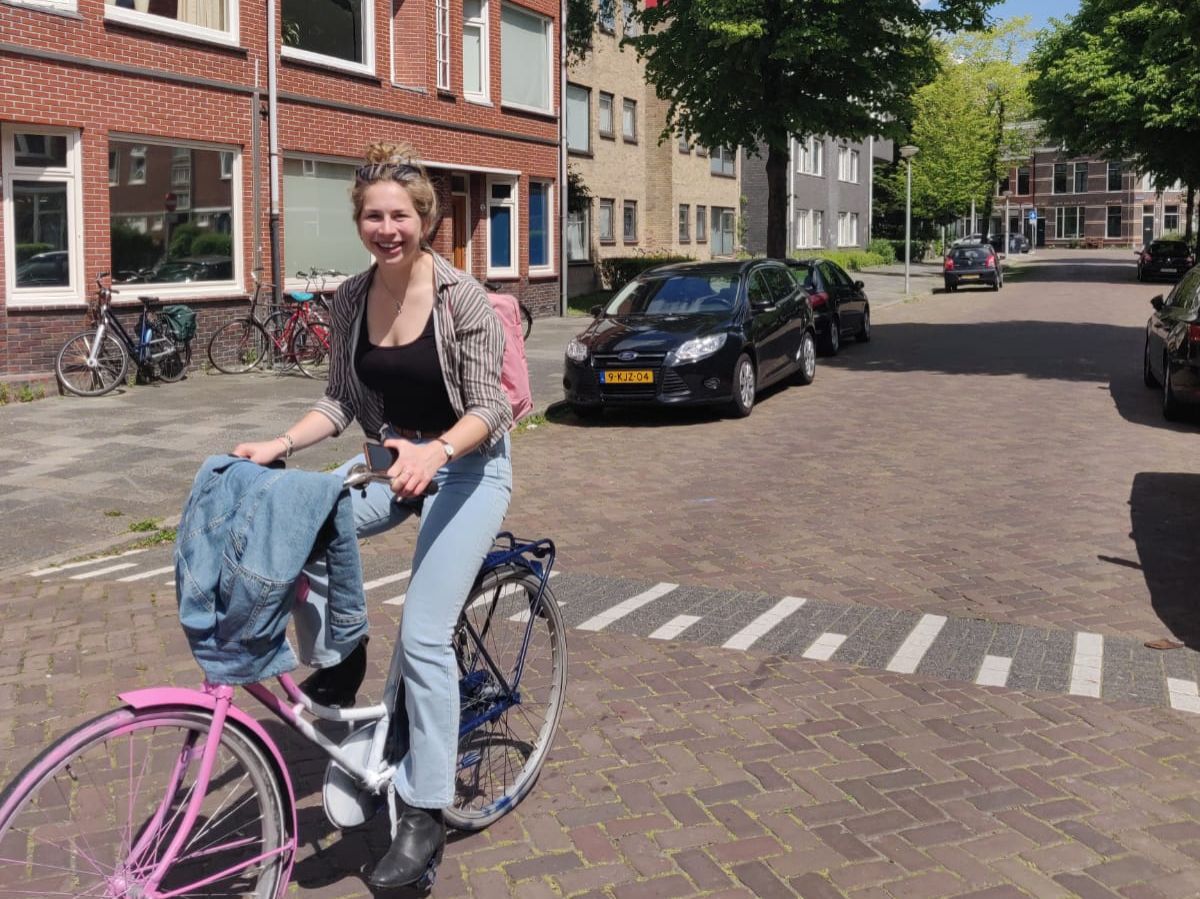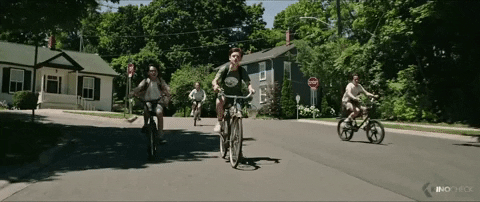How to survive bike life in the Netherlands
| Date: | 10 February 2020 |
| Author: | Danique |

If you’re already living in Groningen while reading this - it means you survived Ciara! Ciara was a huge hurricane-like storm that passed across Western Europe. This meant there were gusts of winds up to 140km/hour, which is definitely enough to throw you off a bike.
To make sure no one actually gets thrown off their bike - either by a storm or by being hit by another biker - I thought I’d make a little overview with tips on how to survive bike life in the Netherlands for all our newcomers.
1. Indicate where you are going
The bicycle is the most common mode of transportation in the Netherlands, with more bikes than people! This means that the bike is a legitimate vehicle in traffic and just like you use your indicators in a car when you’re turning, this is just as important on a bike. Where a bike doesn’t have lights to indicate where you are going, Dutchies simply use their hand. When you are turning left, you stick out your left hand to show the people behind you where you are going, and the same goes for when you are turning right. Be sure to check and see what type of traffic is behind you though - you can’t just stick out your hand and assume everyone else behind you will stop!
2.Know the basic traffic rules
Building on the previous point, you have to know the basic rules of traffic. For example, we bike on the right side of the road, on the designated red bike paths (so not on the pavement!). Another important rule of thumb to pay attention to is that in almost all circumstances (if there are no stoplights controlling the traffic), the traffic coming from your right-hand side has the right of way. Lastly, if you see upside-down triangles, with the narrow end of the triangle facing you, you have to yield. This is basically the Dutch version of a stop sign, and we call them shark teeth. Another important thing to remember is that if someone is angrily ringing their bell behind you, move.
3. Be aware of the rules, don’t get a fine
Just like how in most countries you are not allowed to drive under the influence or use your phone while driving, there are a number of rules about what you can and cannot do on a bike. For example, if you are using your phone while biking, you can get a 95 euro fine. This means you can’t make a phone call, check Google Maps or skip to the next song on Spotify. Another big mistake for a lot of students is not knowing that you need proper lights on your bike. You need a working front and backlight in order to legally partake in traffic (even if you’re just biking to the other end of the street!), otherwise, you can expect a 60 euro fine. Be aware that you’re also not allowed to bike with more than two bags on your steering wheel, as that is also illegal. Three is a crowd - so it’s prohibited to bike next to more than one other person on the street, biking behind each other is the safest option. Lastly, it is illegal (and dangerous) to cycle under the influence.
4. Better safe than sorry: lock your bike
In other countries, it might not be so common to have to lock your bike when you pop into the store, however, in the Netherlands this is a must. Bikes are a desired commodity and will be stolen very, very quickly so make sure to always lock your bike - preferably one frame-lock and an external chain lock that is locked to a pole or something. If you’re gone for a few days, it’s safer to park your bike somewhere in a guarded bike park, like at the station or near the Forum building. You can park your bike there for up to 12 days, which is safer than leaving it outside your house (people might see that it’s been in the same spot for a while and decide to take it).
5. Don’t compare yourself to Dutchies
Biking is a fun and healthy mode of transportation, but it can also be extremely daunting for those who have never had to transport themselves on a bike before. The most important thing to remember here is to not compare yourself to Dutchies, they’ve been biking since they were able to walk. This is also the reason that Dutchies don’t wear helmets while biking, but this doesn’t mean you aren’t allowed to! Biking is second nature to them, and they definitely don’t always abide by the rules I mentioned in point 1-3. Despite that, they usually have a better overview of what is happening on the road, so don’t try to bike like them. You’ll see Dutchies biking with an umbrella in one hand and rolling a suitcase next to their bike in the other hand, a definite do-not-try-this-at-home.
Hopefully, this has given you some more clarity. While it may sound like a very stressful experience, once you get the hang of it and know all the rules, it’ll become easier. One day you’ll look back at your time in Groningen and miss being able to ride a bike everywhere!

About the author


